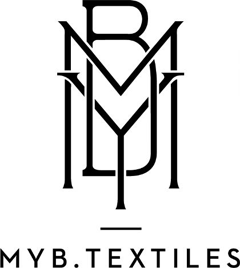History
Morton Young and Borland Ltd was founded in 1900 in the Irvine Valley of Ayrshire, Scotland.
Handloom weaving was brought to the Irvine Valley by Flemish refugees who settled in the area at the end of the 16th Century. There was a well-established knowledge of this craft in the valley towns when Alexander Morton introduced lace making in 1876, this was shortly followed by the invention of the Power Loom in 1877, the technology of which is still relevant today.
Many large mills began to emerge in the towns of Newmilns and Darvel. The industry became the largest employer in the area with Morton Young and Borland being one of the larger mills. Lace and madras weaving continued to flourish until the late 1970s, but the struggle for companies to compete with the distribution of emerging European and Asian economies had a profound effect on the Scottish textile industry.
Over the following 20 years many companies failed to recognise changing buying trends or to keep their plants up to date. Most importantly, they neglected the importance of training for succession. This resulted in the closure of almost all of the factories in the area with Morton Young and Borland now being the last remaining lace and madras producer.
Scottish Lace & Madras
MYB was founded as an exclusive manufacturer of Scottish Leno Gauze weave, later known as Scottish Madras. 'Madras' became a generic term inspired by the product's wide distribution throughout the city of Madras in India.
In 1913 the company invested in Nottingham Lace Looms, enabling them to present a larger variety of products to their clients. The Irvine Valley offered the perfect damp climate for the Nottingham Lace machinery and its product.
MYB Textiles is now the only producer in the world manufacturing patterned lace with original Nottingham Lace Looms, some of which are over 100 years old and up to 1220 cm wide.This manufacturing process is extremely labour intensive. The looms run at a very slow, controlled pace so as to give a high level of quality control: this attention to detail gives the product its niche.
Tradition & Innovation
MYB has invested heavily in developing and modernising the production techniques used to create its Scottish Lace and Madras. In return for the use of the loom that helped him produce the first seamless airbag, local inventor Michael Litton used his technical expertise to develop a bespoke technology on which MYB would then weave their Scottish Madras fabrics.
Litton installed an Italian Vamatex loom – this new technology was to maintain the high quality product MYB were known for but with a muchlarger production capability: from 50 metres to 850 metres per loom per week. They still remain the only mill in the world with access to this unique technology. This innovation and development profoundly impacted the sales position of Morton Young and Borland and the company maintained a strong position for years thereafter.
Today many of the original Nottingham Lace looms have also been modified and networked to the CAD computers in the design office. This is yet another amazing development for MYB and has allowed for increased production and design capability whilst simultaneously decreasing the turnaround time for clients.
Over the past 20 years, Morton Young and Borland has developed the MYB Textiles name, adding a contemporary edge to their proud heritage. With a reputation built on the specialist skills and traditions prevalent in its products, maintaining these niche skills continues to be of paramount importance going forward. They thrive as the last remaining mill in the area due to their passion for continuing the lace and madras production tradition with the aid of new forms of product development and innovation.

































































